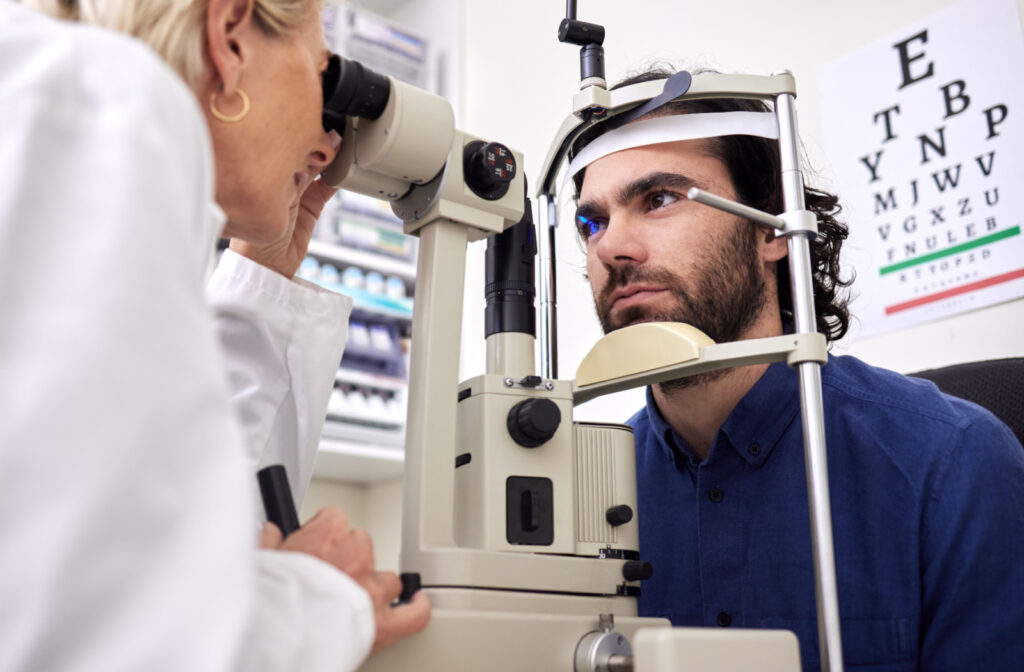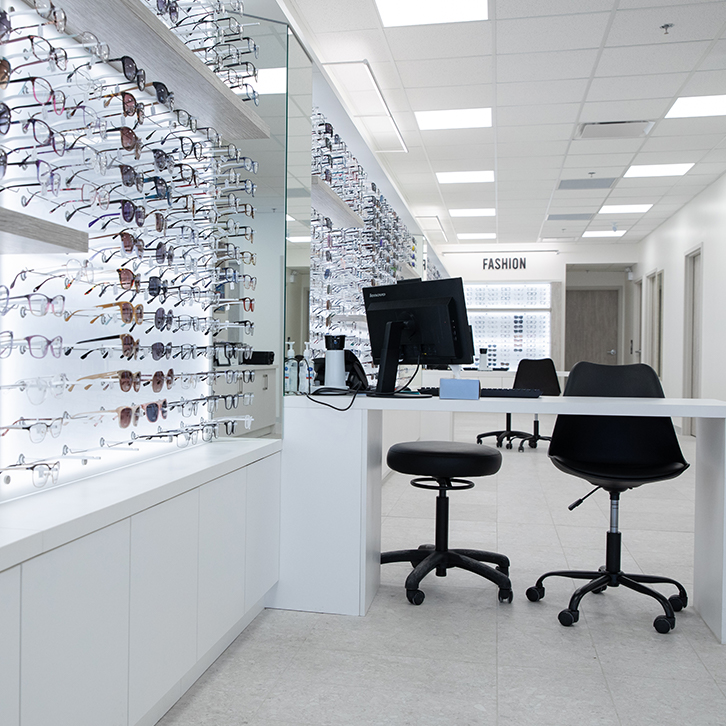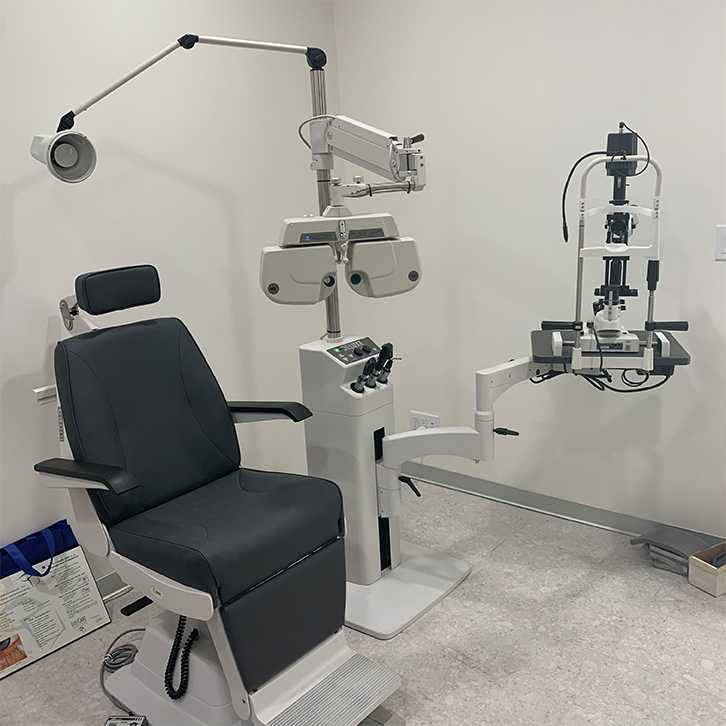Headaches are one of the most common ailments, and when it comes to headaches between the eyes, there could be a few different reasons they’re happening.
Causes of headaches between eyes can include:
- Eye strain
- Sinusitis
- MIgraines
- Optic Neuritis
- Glaucoma
It’s essential to understand what might be causing the headache between your eyes to help identify the problem and seek treatment. Visiting your optometrist can help you get an accurate diagnosis and alleviate symptoms.
Headaches Between the Eyes
When your headache is focused between the eyes, it can signify problems with your eyes, facial nerves, and infections, including:
- Eye strain
- Sinusitis
- Migraines
- Optic neuritis
- Glaucoma
Eye Strain
Eye strain is a cluster of symptoms including:
- Dry eyes
- Sore eyes
- Sensitivity to light
- Difficulty concentrating
- Neck, shoulder, and back pain
You’re at risk of eye strain if you spend extended periods in front of a computer or smartphone screen. When staring at a screen for long durations, your eye muscles tend to fatigue, causing tension headaches.
Eye strain can worsen during certain environmental conditions, including:
- Excessive glare
- Low contrast
- Incorrectly placed screens
- Poor posture
If you work on a computer, take a break every 20 minutes and rest your eyes. You can also try looking away from the screen to relax your eye muscles. Additionally, consider getting an eye exam to determine if you need updated glasses.
Sinusitis
Inflammation of the sinuses, sinusitis, affects the maxillary sinuses, which are located near your eyes. The pressure from a sinus infection can cause a headache to form between and behind your eyes.
You may also have other symptoms including:
- Runny nose
- Congestion
- Facial pressure
- Fatigue
- Fever
- Cough
Treatment options include over-the-counter or prescription medications, nasal irrigation, or a combination of treatments.
Migraines
For some people, headaches between the eyes could be due to migraines. Migraines are severe headaches that can last for several hours or days. They are often accompanied by other symptoms such as:
- Nausea
- Vomiting
- Sensitivity to light and sound
If you are experiencing migraines, consider keeping a headache diary to track your triggers and avoid or manage them. Common triggers for migraines include:
- Dehydration
- Bright lights
- Loud sounds
- Hormone fluctuations
- Severe heat
- Stress
- Sleep pattern changes
Migraines are neurological, and attacks must be treated and managed to avoid debilitating symptoms.
Optic Neuritis
Optic neuritis is a condition that occurs when the optic nerve that connects the brain to the eye becomes inflamed. One of the symptoms of optic neuritis is a headache between the eyes. If you have optic neuritis, you may also experience:
- Blurred vision
- Pain when you move your eyes
- Loss of vision
It can be emergent if you have severe pain, sudden changes in your vision, or sudden vision loss. Optic neuritis can be a sign of other health problems, including:
- Nerve conditions
- Autoimmune conditions
- Infections
Glaucoma
Glaucoma is an eye condition that involves damage to the optic nerve, often caused by high eye pressure. While most cases of glaucoma have no early symptoms, acute angle-closure glaucoma can have a sudden onset of symptoms that warrant emergency eye care.
One of the symptoms of glaucoma is a headache that starts at and between the eyes. You may also experience:
- Severe eye pain
- Blurred vision
- Halos around lights
- Tenderness in the eyes
- Nausea and vomiting
What Triggers Headaches Between the Eyes?
While every headache is different and may have unique triggers, many factors can elicit head pain, including:
- Stress
- Fatigue
- Bright lights
- Loud sounds
- Hunger
- Alcohol use
- Strong perfume exposure

How to Treat Headaches Between the Eyes?
Before beginning treatment for your headaches, you should visit your optometrist first to determine the underlying cause. Common temporary relief methods include:
- Over-the-counter pain medication
- Muscle relaxants
- Magnesium supplements
- Heat or cold therapy
To prevent headaches from developing, there are healthy lifestyle habits you can introduce to your routine, including:
- Exercising regularly
- Easing stress
- Limiting processed foods
- Setting a consistent sleep schedule
- Drinking plenty of water
- Limiting alcohol intake
- Quitting tobacco use
- Reducing caffeine intake
Care for Your Health with Frequent Eye Exams
If you have been experiencing headaches regularly, schedule an eye exam at Dr. Bishop & Associates. Several conditions can lead to headaches, and your optometrist can help identify the underlying cause and develop an appropriate treatment plan.



















